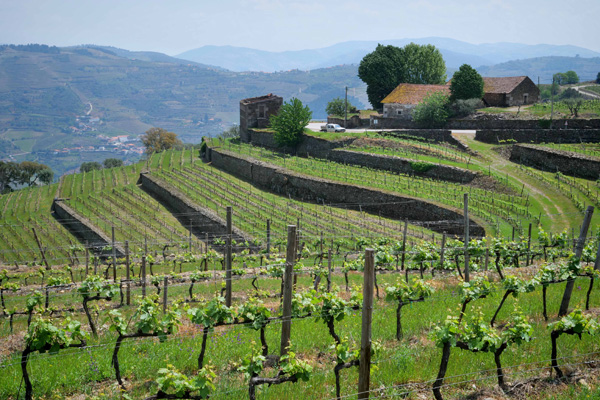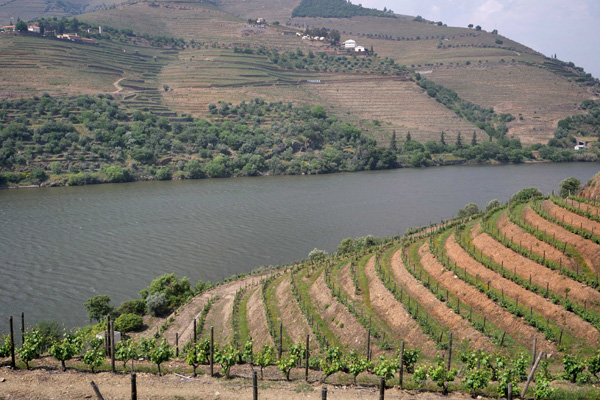Porto, Portugal – Guest Post Part Two
by Ken MacAdams
Ken is a traveling man and uses Lumix gear during his travels. Ken will share some of his travel photography and stories here on Successful-Photographer as he has in the past. Ken’s camera of choice is Panasonic’s flagship stills camera the Lumix G9 with the Leica DG Vario-ELMARIT Professional Lens, 12-60MM, F2.8-4.0
If you want to start at the beginning here’s part one.
Heeeeere’s Ken again!
We made a day trip out into the beautiful, hilly, wine region to the east of Porto. Vineyards cling to the sometimes steep hillsides bordering the meandering Douro River. Old World cities cling to these hillsides also, as the narrow road snakes its way inland. We stopped at one of the vineyards along the way for a tour and wine tasting experience. A narrow road switch-backed us from the river side to the establishment set high up on the hillside. Views up and down the river valley revealed terraced vines as far as the eye could see. Inside, the guide explained the different types of port wines – white, red, tawny, and rose. For the different varieties of grapes there is a different aging processes for the wines, with some aged in wooden casks, others in bottles. We were led deep underground, into their wine cellar, and allowed to walk between rows of neatly stacked wooden casks. Another area housed thousands of bottles of port wine, all quietly aging away! Climbing back up from the cellar, we entered a tasting room, where several different varieties were uncorked for our sampling.

Rural vineyards as far as the eye can see
All Images in this post © Ken MacAdams
 Douro Valley vineyards with the town of Sabrosa in the background
Douro Valley vineyards with the town of Sabrosa in the background
Back in the 1700’s, the wines processed inland by the different vintners was transported downriver to Porto in large casks on Rabelo boats, small river-going boats. The casks were stored in warehouses along the river in Porto, called “lodges”. The port wine often aged here for years before being loaded onto ocean going ships which transported them primarily to England, or to final markets in Europe. Modern dams on the river make this shipping process impossible today. Many of the original “lodges” in Porto along the river have been converted into wine tasting establishments. You can still see replicas of the historic boats, complete with wine casks, in many of the old riverside cities that dot the banks of the Douro River, as well as in the Ribeira district in Porto.

The River Douro with vineyards clinging to the hillsides
It was late in the night when we returned to Porto, but our travel experiences up through the Douro Valley were priceless. We’d seen history, tasted the famous Port wines, and walked among the vineyards. We could have easily stayed in a villa back in the valley, but other destinations in Portugal beckoned.
Ken MacAdams – “I grew up with a darkroom in my basement…so all the old film skills were my friend when  digital came on the scene. Funny thing happened…photography just got more interesting as digital posed new challenges! While I loved the characteristic sounds and smells of the old wet-process darkroom days, I wouldn’t go back!”
digital came on the scene. Funny thing happened…photography just got more interesting as digital posed new challenges! While I loved the characteristic sounds and smells of the old wet-process darkroom days, I wouldn’t go back!”
Ken has always loved to travel, so when he made a common connection with the fact that either a long day pounding the streets of some foreign city, or shooting the last dance at a wedding, a good part of his physical weariness came from lugging around my big heavy DSLR. That’s when he started looking at alternatives – and ended up selecting Panasonic Lumix Micro Four Thirds gear.
Ken is rarely without a camera, and the next great photo travel experience – whether local or abroad – is always in the back of his mind! A longtime resident of the Four Corners, and when he’s not out on the road, he enjoys some of the great outdoor opportunities found there – mountain biking, hiking, and Jeeping.
 digital came on the scene. Funny thing happened…photography just got more interesting as digital posed new challenges! While I loved the characteristic sounds and smells of the old wet-process darkroom days, I wouldn’t go back!”
digital came on the scene. Funny thing happened…photography just got more interesting as digital posed new challenges! While I loved the characteristic sounds and smells of the old wet-process darkroom days, I wouldn’t go back!”







